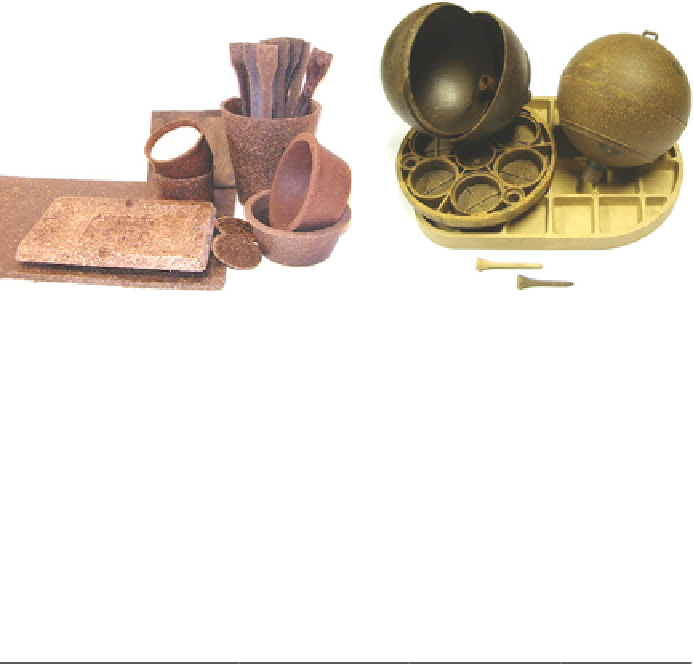Environmental Engineering Reference
In-Depth Information
Figure 6.23
Examples of thermoplastic agromaterials obtained from sunflower oilcake and
whole corn plant.
Table 6.5
Average composition (%, dry matter basis) of the three most common feedstocks
used for the production of agromaterials.
Sunflower oilcake
Sugar beet pulp
Whole corn plant
Lipids
1
0
3
Sugars
6
0
7
Ash
7
5
5
Cellulose
12
23
21
Hemicelluloses and pectins
17
48
24
Lignin and phenolics
13
2
3
Starch
1
0
30
Protein
34
7
7
biopolymers can be plasticised
in situ
to constitute a natural continuous matrix for
cellulosic fibres.
Destructuring the native organisation of the raw agricultural products is possi-
ble with the combination of thermal, mechanical and chemical effects in an
extruder (Figure 6.24). In the first constraint zone, the matter is roughly crushed.
In the second zone, a compression (up to 20 bars) in the reverse screw induces a
non-degrading break of the structure when the moisture content and the tempera-
ture are 20-30% and 110-130°C, respectively. Water plays the roles of plasticiser
and lubricant, avoiding degradation under high shear. The same phenomenon
occurs with a higher compression and a lower shear in the die to complete the
transformation.
Starch plasticisation is obtained by gelatinisation of the grains in low-moisture
conditions leading to the 'melting' of the starch grains, the key phenomenon in the
transformation of the whole corn plant. The plasticised starch forms a continuous
matrix in which the defibrated fibres are embedded, as showed in Figure 6.25.




